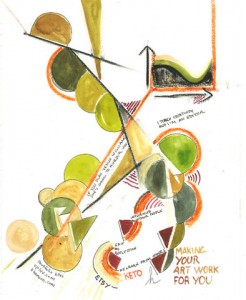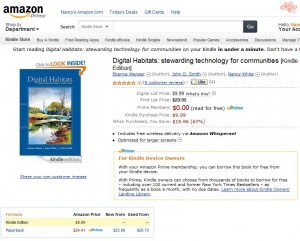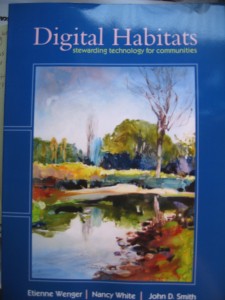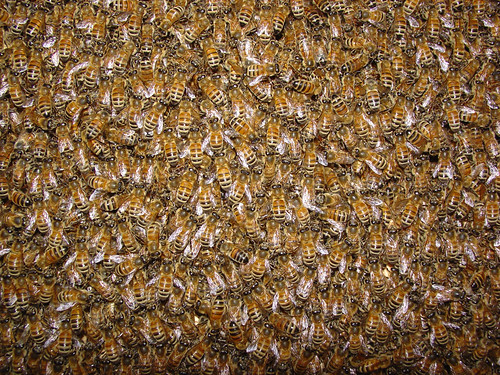(Crossposted on Technology for Communities and Network Weaving CoP)
A conversation emerging in the Network Weaving Community of Practice (NWWCoP) focuses on this question: how can/do we use social media for intentionally weaving our networks? As we prepare for a synchronous conversation today, I realized I can frame this question from a technology stewardship perspective, specifically the idea of curating our own personal technology configurations so that they can help us tap into and amplify the value of our networks.
What is a Technology Configuration?
From Digital Habitat’s we framed the idea of configuration this way: “By configuration we mean the overall set of technologies that serve as a substrate for acommunity’s habitat at a given point in time—whether tools belong to a single platform,to multiple platforms, or are free-standing.”
For a while I was obsessed with tagging material that helped us see others’ configuration, via my Delicious tags. Each configuration teaches me something new and gives me a new perspective on my own and the configurations of my communities. (See also other posts on the Digital Habitats blog on configuration.) In some ways, these felt like a type of fingerprint. While many communities used similar tools, the individual variations were fascinating. This made sense to explore at the community level, especially with more bounded communities.
While community’s have their configurations, so do individuals. When working with networks, where we are tapping into the value of connections between people, it becomes the intersection of individual configurations that fascinate me for many reasons. Here are a few:
- How do individual’s configurations intersect and complement or compete with their community’s configuration.
- How does the intersection between and individual’s configuration and their community’s make the individual’s networks available to their community? Specifically, what are the individual-to-individual configuration implications?
- How do we use our individual configurations for network weaving itself? (For example, see http://oneforty.com/i/toolkits)
Let’s get a bit more concrete about #3. Clearly a lot of non profits are interested in social media generally, but lets focus on network weaving for a moment.For example, some of my key network weaving practices include “closing triangles” (introducing and helping people connect), sharing information from smaller, closed groups out to the larger world/networks, and curating resources within and across networks. What configurations might I use for these?
- Closing Triangles – email, Twitter, LinkedIn, Skype, Facebook – all to do introductions and to “begin the conversations” while linking to relevant bios and backgrounds. The emphasis is on the social interaction and visibility of individual identity.
- Sharing Information – blogs, Twitter (and related tools), delicious, Digg, Flickr, YouTube (and all content sharing sites) – the focus is on publication in some form or another, then connecting people to that content.
- Curating Resources – mostly the same as sharing information, but with the added layer of tags, rating mechanisms, aggregation tools.
Managing Our Configurations
A major challenge we run up against in this proliferation both of practices and tools is how to manage this. There is a lot of talk these days of dashboards and tools like Social Base. I have resisted digging too deeply there due to my own habit of “rabbit holing” and not getting my work done, but clearly this is on my radar screen. What I’ve seen so far has been more about tracking metrics of social media rather than tying the media to the practice and desired outcomes.
Any guidance for me? What is your practice of managing your technology configuration from a particular practices perspective, such as network weaving?





